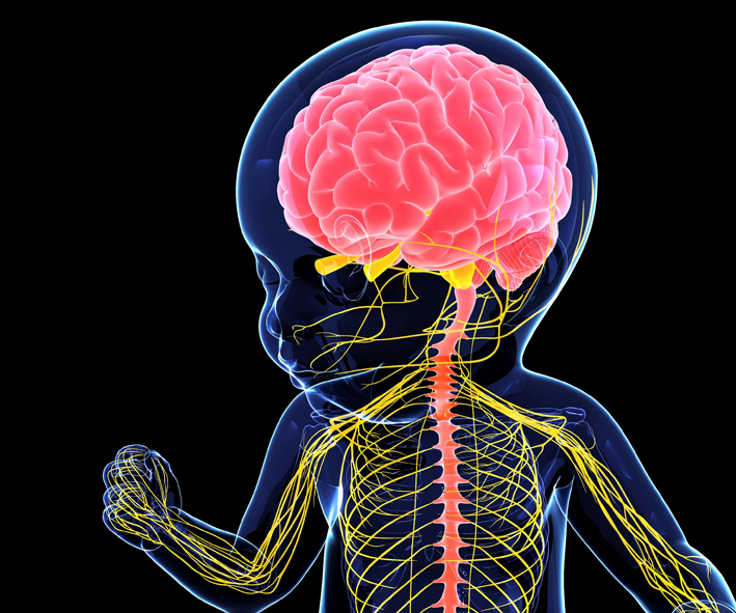Environmental toxicants and child development
Article
|Last update
Environmental toxicants can affect a child's development as early as the foetal stage. The NeuroTox and MoBa-PlastChem projects contribute to insights on how certain chemicals impact development during this vulnerable phase and how this relates to health development in childhood and adolescence.
How do environmental toxins affect child development?
Research shows that environmental toxicants can affect child development already at the foetal stage. Despite its significant impact on public health, we still know too little about how such chemicals affect brain development and how this relates to conditions like ADHD, autism, cerebral palsy, and epilepsy in children. We particularly lack knowledge about how combinations of various environmental toxicants (the so-called "cocktail effect") can be more harmful than individual substances alone.
To fill these knowledge gaps, the Norwegian Institute of Public Health has intensified research in this field in recent years. The NeuroTox project, funded by the Research Council of Norway, has contributed new insights through extensive, interdisciplinary collaboration with leading researchers from the USA, China, the UK, and several research groups at the Norwegian Institute of Public Health.
What did the NeuroTox project investigate?
The study included data from 3,500 mother-child pairs in the Norwegian Mother, Father, and Child Cohort Study (MoBa). Researchers analysed:
- Questionnaire data and registry data
- Biological samples from mother and child
- Clinical examinations of cognitive functions and psychiatric symptoms in children
- Diagnoses such as ADHD, autism, cerebral palsy, and epilepsy in children
Environmental toxicants were measured in the mother's blood and urine during pregnancy to map what the foetus was exposed to. Researchers examined substances known or suspected to disrupt brain development:
✅ Per- and polyfluorinated substances (PFAS) - e.g., PFOA and PFOS
✅ Heavy metals – e.g., mercury, lead, cadmium, and arsenic
✅ Essential trace elements – e.g., manganese, zinc, copper, and magnesium
✅ Phthalates – plasticizers
✅ Organophosphates – pesticides and flame retardants
What did the researchers find?
Findings from NeuroTox have been published in several international research journals and summarized in a UNICEF report from 2022 - Places and Spaces.
Several environmental toxicants during pregnancy were linked to neurodevelopmental disorders and/or poorer cognitive functions
- Elevated or varied levels of PFOA, PFOS, cadmium, lead, arsenic, magnesium, manganese, and copper were associated with ADHD and/or autism.
- PFOA and other PFAS were linked to poorer working memory in children.
- Phthalates and organophosphates were related to ADHD and/or impaired cognitive functions.
- Elevated levels of copper and manganese in the mother's blood during pregnancy were associated with cerebral palsy in the child.
Environmental toxins can disrupt metabolic hormones and affect brain development
- Measurements of thyroxine and other thyroid hormones in the mother and child showed that they are important for the development of ADHD in the child, and certain environmental toxicants affected hormone levels, which in turn could be linked to ADHD in the child.
Epigenetic changes may play a role
- Researchers analysed epigenetic markers in DNA from the mother and child, which affect how genes are turned on and off. Several heavy metals (e.g., mercury and lead) and essential trace elements (e.g., selenium and copper) showed associations with these epigenetic changes in the mother and/or child, which are closely linked to brain development.
The way forward: MoBa-PlastChem
As a follow-up to NeuroTox, we have now started MoBa-PlastChem, a research project that investigates how plastic-related chemicals, such as phthalates, organophosphates, PFAS, phenols, and their mixtures, affect child development in the foetal stage.
Plastic chemicals can disrupt sex hormones, which are crucial for the development of both the brain and the reproductive system. Therefore, we will also measure sex hormones during pregnancy and examine how they relate to plastic chemicals and neurodevelopmental disorders and reproductive health in children and adolescents, as well as investigate gender differences in these relationships.
In this project, we also use data and biological samples from MoBa, providing a unique opportunity to investigate how plastic chemicals and their mixtures can affect child development in a large, population-based health study.
Why is this important?
This research provides us with valuable insights into how environmental toxicants from plastic interact with hormonal factors to impact child development. A better understanding of which chemicals pose the greatest risk and how they interact with biological factors can provide the necessary basis for stricter regulation, earlier detection of different health conditions, and more tailored support for children and adolescents.
Read also:
- Prenatal exposure to toxicants and childhood neurodevelopmental disorders and cognitive functions (NeuroTox) - NIPH
- Plastchem prenatal exposure to plastic chemicals and reproductive health in children and adolescents from the Norwegian mother father and child cohort study
External links:
- UNICEF Report Card17 Places and Spaces
- Prenatal exposure to perfluoroalkyl substances and associations with symptoms of attention-deficit/hyperactivity disorder and cognitive functions in preschool children
- Metal and essential element concentrations during pregnancy and associations with autism spectrum disorder and attention-deficit/hyperactivity disorder in children
- Prenatal exposure to per- and polyfluoroalkyl substances (PFAS) and associations with attention-deficit/hyperactivity disorder and autism spectrum disorder in children
- Gestational blood levels of toxic metal and essential element mixtures and associations with global DNA methylation in pregnant women and their infants
- Association between gestational levels of toxic metals and essential elements and cerebral palsy in children
- Associations between urine phthalate metabolites and thyroid function in pregnant women and the influence of iodine status
- Neonatal thyroid-stimulating hormone and association with attention-deficit/hyperactivity disorder
- Maternal thyroid function during pregnancy or neonatal thyroid function and attention deficit hyperactivity disorder: A systematic review
- Prenatal Phthalates, Maternal Thyroid Function, and Risk of Attention-Deficit Hyperactivity Disorder in the Norwegian Mother and Child Cohort
- Pregnancy exposure to organophosphate esters and the risk of attention-deficit hyperactivity disorder in the Norwegian mother, father and child cohort study
- Prenatal phthalate exposures and executive function in preschool children


